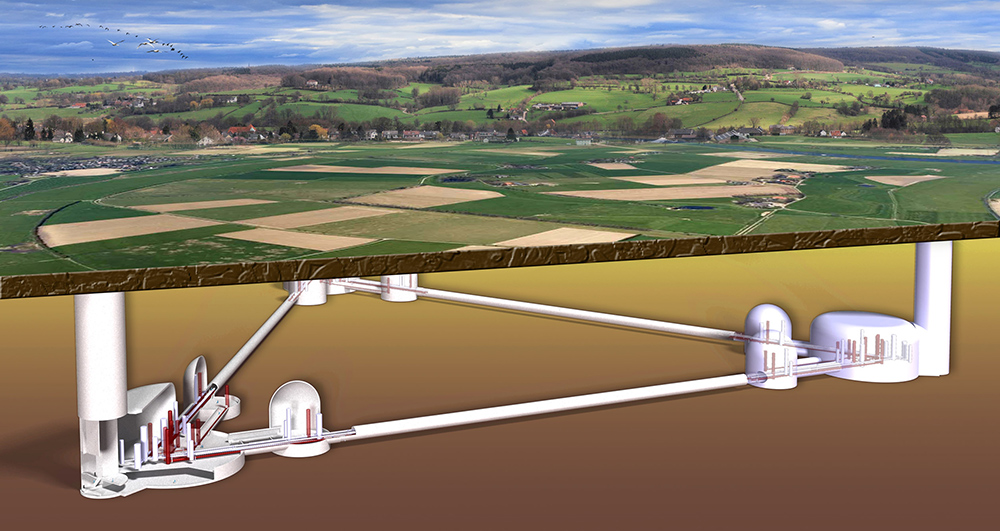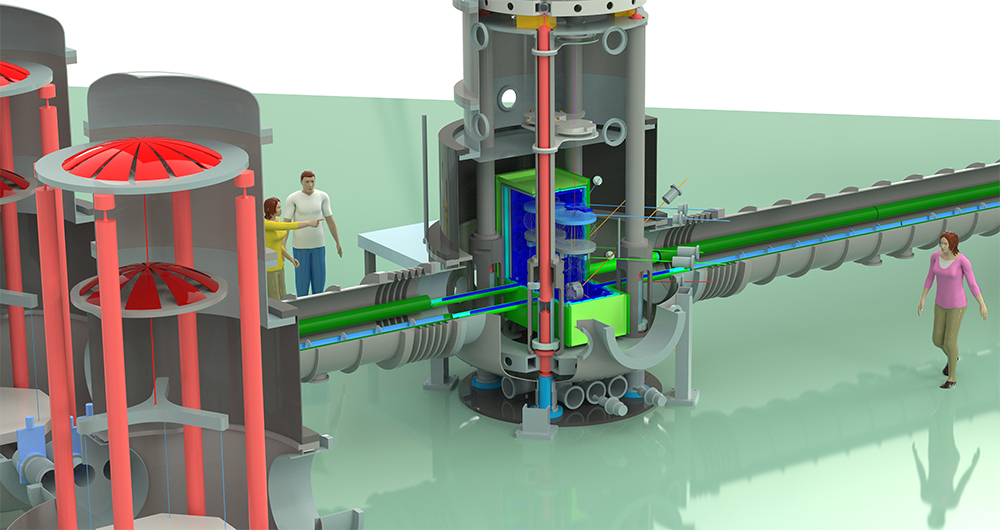ETpathfinder is a R&D infrastructure for testing and prototyping innovative concepts and enabling technologies for the Einstein Telescope, the first of a new class of future gravitational wave observatories.
Background
The discovery of gravitational waves from merging black holes and neutron stars by Advanced LIGO and Advanced Virgo marked the beginning of new era in observing our universe and scientist are keen to fully open up this new window to the (dark side of the) cosmos.
ET will detect several hundreds thousand gravitational wave signals per year and allow us listen to the sound of merging black holes across the entire universe. For the first time, researchers will be able to study the precise structure of neutron stars, the birth of black holes and the structure of the universe immediately after the Big Bang.
Using advanced laser-interferometry methods, the Einstein Telescope will be able to achieve a design sensitivity of 22 decimal places. This means that it can detect differences in distance ten thousand times smaller than the size of the protons in an atomic nucleus. To achieve that incredible accuracy, the observatory requires unique technologies, some of which are not even fully developed yet.
In order to develop new technologies required for the Einstein Telescope, scientists and companies from the Netherlands, Belgium and Germany are setting up a joint R&D facility: ETpathfinder, which is intended to develop the precision technology, coatings and optics as well as special measurement and control technology, seismic isolation, required for the Einstein Telescope and to test them in an ET-like environment.

Goals
The designs suggested for third generation (3G) laser-interferometric gravitational wave (GW) observatories, differ in several aspects and technologies strongly from the currently operating GW detectors Advanced LIGO, Advanced Virgo and KAGRA. Advanced Virgo and Advanced LIGO operate based on fused silica mirrors at room temperature and a laser wavelength of 1064 nm. The Japanese KAGRA operates with cryogenic sapphire mirrors.
In contrast, both the Einstein Telescope (ET) and Cosmic Explorer (CE) plan to operate cryogenic mirrors made from silicon and read out by lasers with wavelength further into the infrared (about 1550 nm to about 2100 nm).
In order to inform and de-risk the design efforts for 3G detectors, and to develop, test and qualify their technologies, new test facilities are required, providing an ultra-low noise test bed in 3G-like environment. ETpathfinder strives to serve this purpose. It will provide a currently unique facility to holistically prototype the following aspects:
- New Temperature: Cryogenic temperature of the main test masses (120 K and 15 K); low-noise cryo-coolers, decoupling of cryo-coolers from test masses while providing sufficient cooling power, cryo-shields etc
- New Mirror Material, i.e. Silicon: Changing from fused silica (amorphous material, electrically insulating) to silicon (crystalline semi-conductor) will be a major change with many implications for optical aspects, polishing, coatings etc. as well as mechanical aspects.
- New Wavelength, i.e. 1550 – 2100 nm: Moving to silicon as test mass material requires moving to a longer laser wavelength to reduce optical absorption. Laser and optical and electro-optical components (for instance high-efficiency, low-noise photo detectors) need to be developed and qualified for GW detector relevant aspects. Laser stabilisation loops (power, frequency, jitter, etc.) need to be developed.
- Advanced Quantum Noise Reduction Techniques: Innovative Quantum non-demolition (QND) schemes have been suggested to realise the ambitious low-frequency sensitivity goals of 3G observatories. These need to be tested in conjunction of the points above.
All four of these strands are interlinked and ultimately need to be tested at a systems level for their cross-compatibility and at a displacement sensitivity similar to the Einstein Telescope.
Click here for more information about the Einstein Telescope

Downloads
Download: ETpathfinder design report (pdf, 7MB) Download: Presentation at Virgo-KAGRA 3G workshop, Feb 2019 (pdf, 3MB) Download: Presentation at 11th ET Symposium, Dec 2020 (pdf, 7,5 MB)
